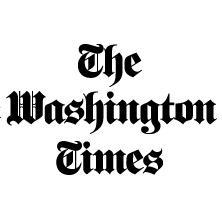July 30, 2019
In early July, [AdImpact] released our 2020 political spending forecast covering all federal, state, and down ballot races. Our forecast predicts approximately $6 billion in paid media designed to influence voters and the outcomes of major elections across the United States.
Since our forecast is built on historical spending data for more than 2,000 individual races, we can predict ad spending within actual race types: House, Senate, Gubernatorial, and Presidential. It is no surprise that the Presidential race will dominate with more than $2.7 billion in total spending. We believe the Presidential primary election will see approximately $970 million, mostly on the Democratic side, and the Presidential general election will witness $1.7 billion in paid media spending.
Paid Advertising Toplines
Paid media spending in U.S. House races will be approximately $1 billion and will focus on the 90 most competitive races. Where will this money go and which campaigns will benefit? That is a constant moving target based on the likelihood of victory for either party. This past week saw a few early benefits for the House Democrats.
Texas and Georgia are two states that will see significant House spending, and it’s about to get bigger based on news over the past few days. Republican U.S. Reps. Pete Olson (TX-22) and GA-07 Congressman Rob Woodall (GA-07) just announced that they won’t run for re-election next years. Both faced strong Democratic challengers in 2018, and both nominees are running again in 2020. Here is a breakdown of two surely contested districts in 2020.
2018 Paid Media Spend GA-07
Democrat Carolyn Bordeaux ended the 2nd quarter of 2019 with more than $530,000 cash on hand, having raised a total of $634,000 for the year. With Woodall’s retirement, the GOP will be scrambling for a top-tier candidate who can match her fundraising prowess. In 2018, the GA-07 race saw just over $1.6 million in total spending. We predict this 2020 election could exceed $20 million in total paid media spending across broadcast, cable, radio and digital. It’s important to note that this district is entirely covered by the expensive Atlanta media market and Atlanta will see spending from the U.S. Senate race and the Presidential election, too. In total, the Atlanta DMA will see more than $140 million in political ad spending for the 2020 election cycle.

2018 Paid Media Spend TX-22
Texas’ 22nd congressional district is almost a carbon copy of Georgia’s 7th CD, except for cost. Compared to Georgia, less money was spent in TX-22 during the 2018 election. However, with U.S. Rep. Olson’s retirement, this seat will see significantly more spending than last cycle. Democrat Sri Preston Kulkarni, who challenged Olson last cycle, will be running again in 2020. As of his last FEC report, he showed $345,00 cash on hand. In 2018, Kulkarni, raised more than $1.5 million in contributions. This congressional district falls within the Houston media market which, like Atlanta, will see multiple contested House races. In total, we project more than $65 million in total paid media expenditures for the Houston media market in 2020. Statewide in Texas, we predict more than seven U.S. House seats will exceed $10 million each in paid media spending. Our forecast shows media spending in TX-22 will jump from a $400,000 to $8 million in 2020.

Determining the most expensive House races is not an exact science. But there are clues from past spending and current political realities that have helped us determine the districts that will see big money in 2020. TX-22 and GA-07 are two good examples of contested seats in states in expensive media markets that are increasingly important to both Democrats and Republicans. While we can’t predict winners this far from Election Day, we can watch how money is moving and predict which districts are sure to see a fight in 2020.






